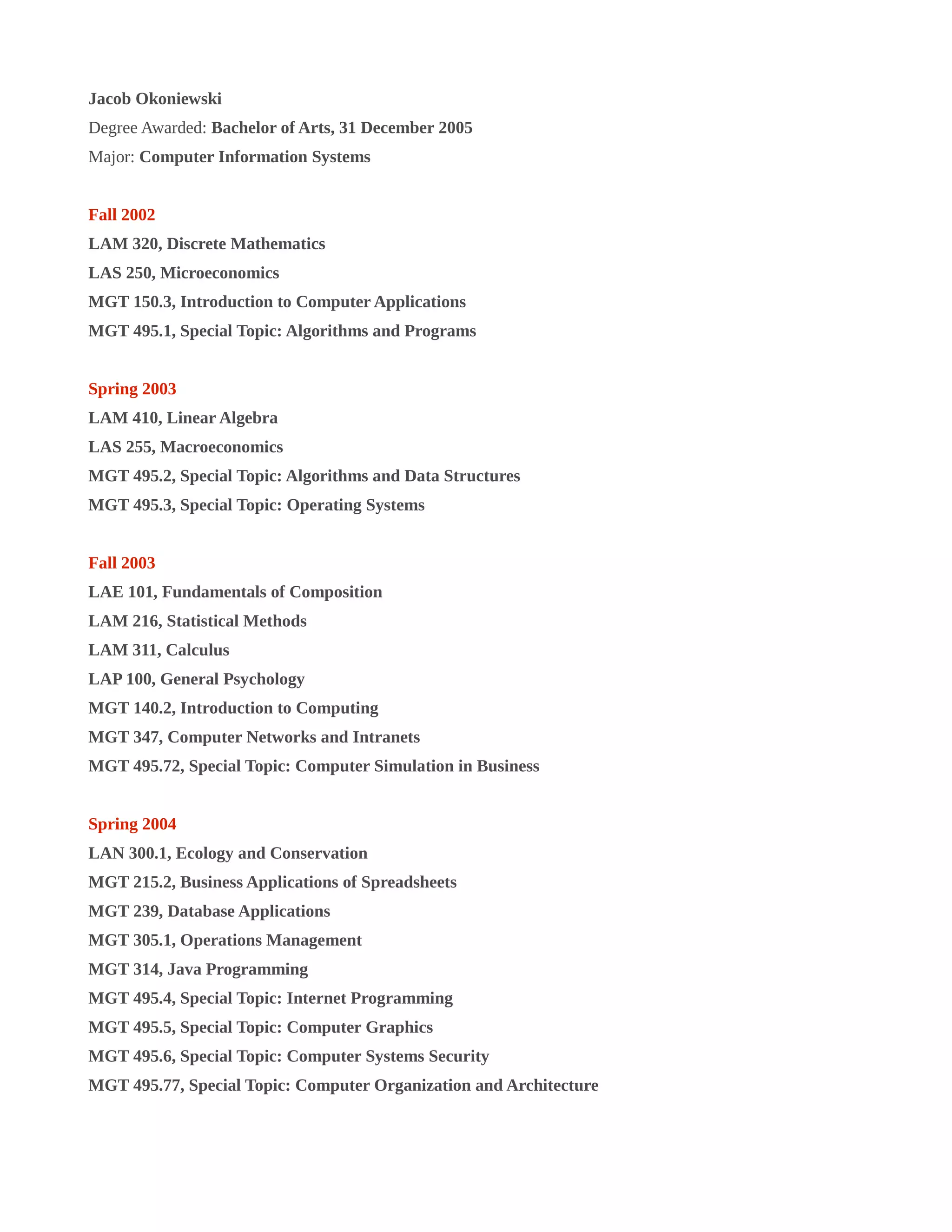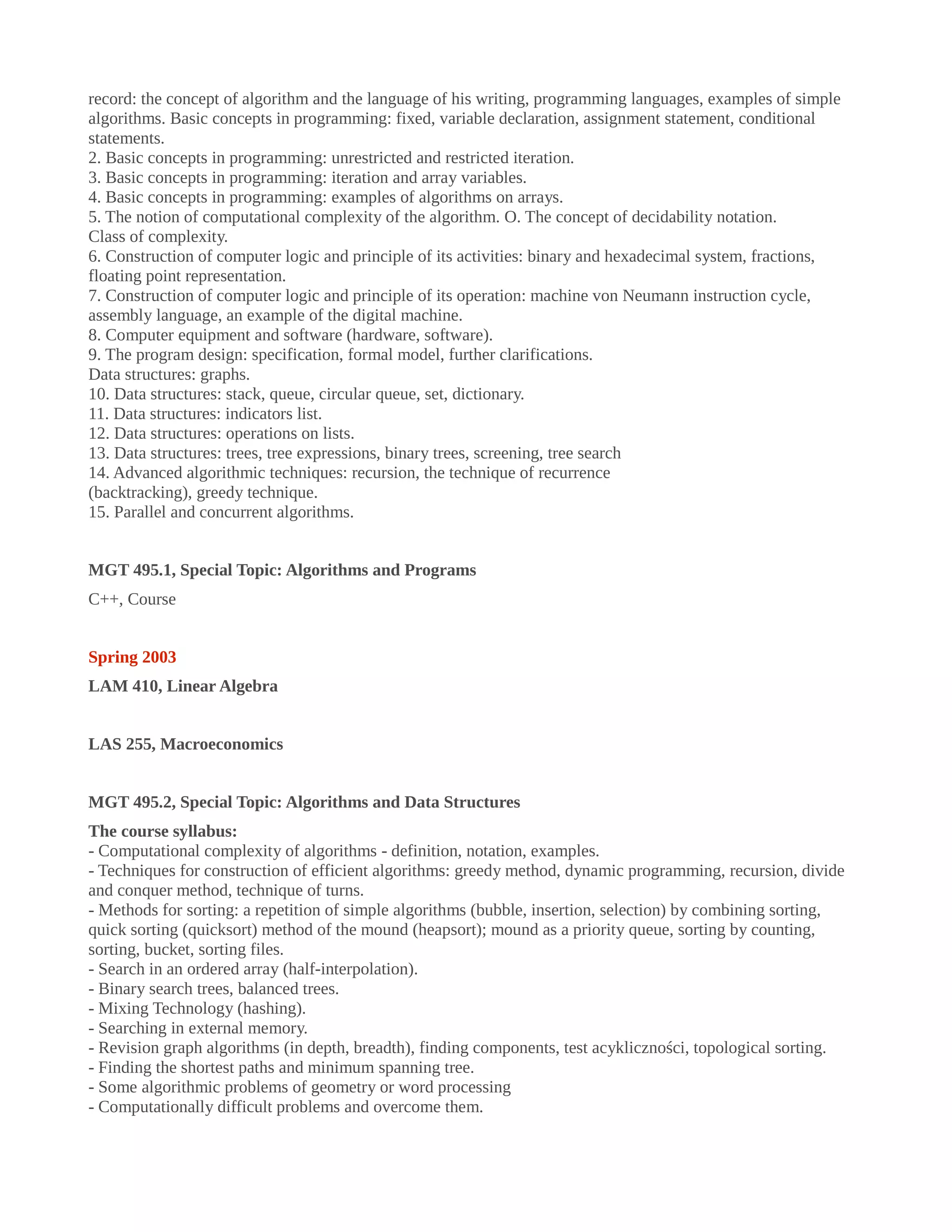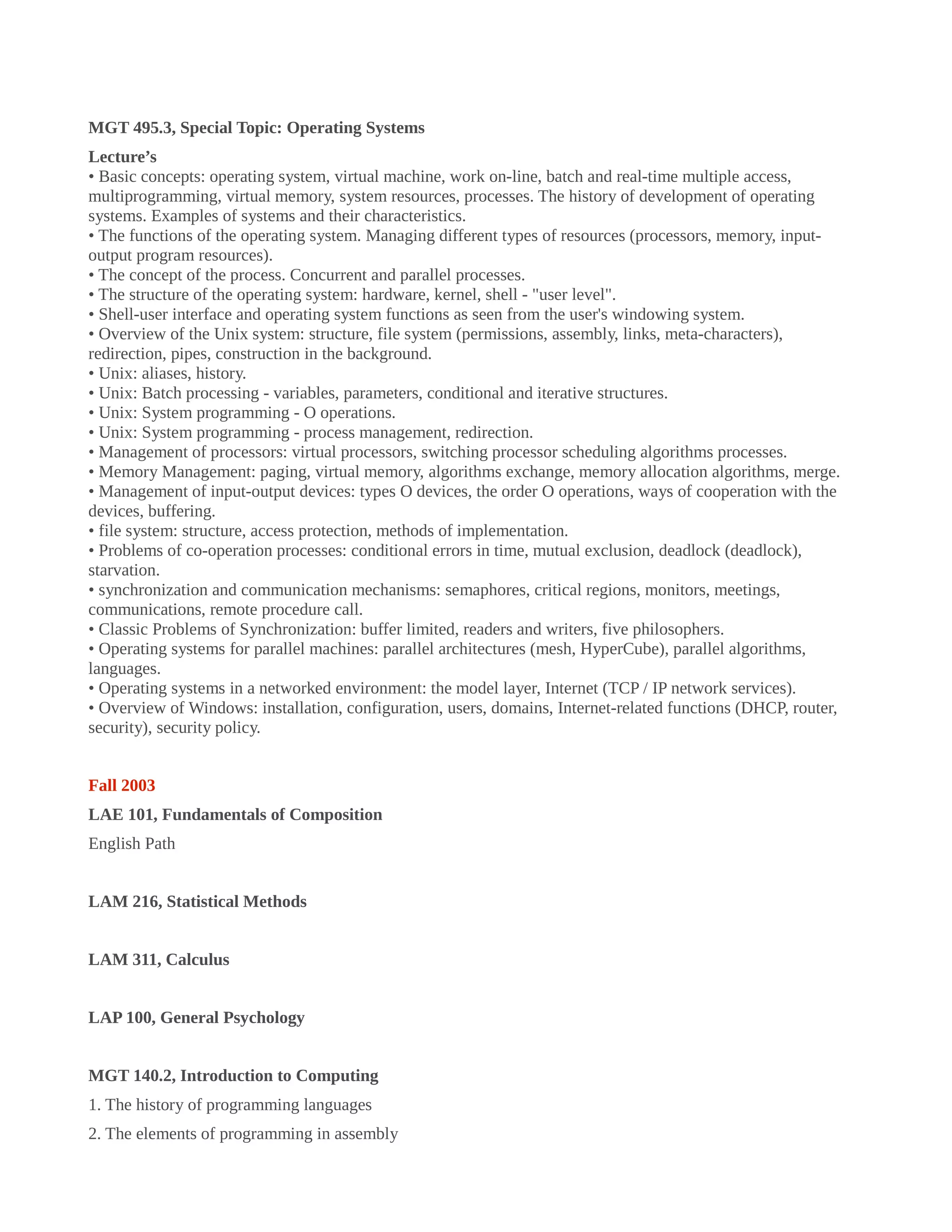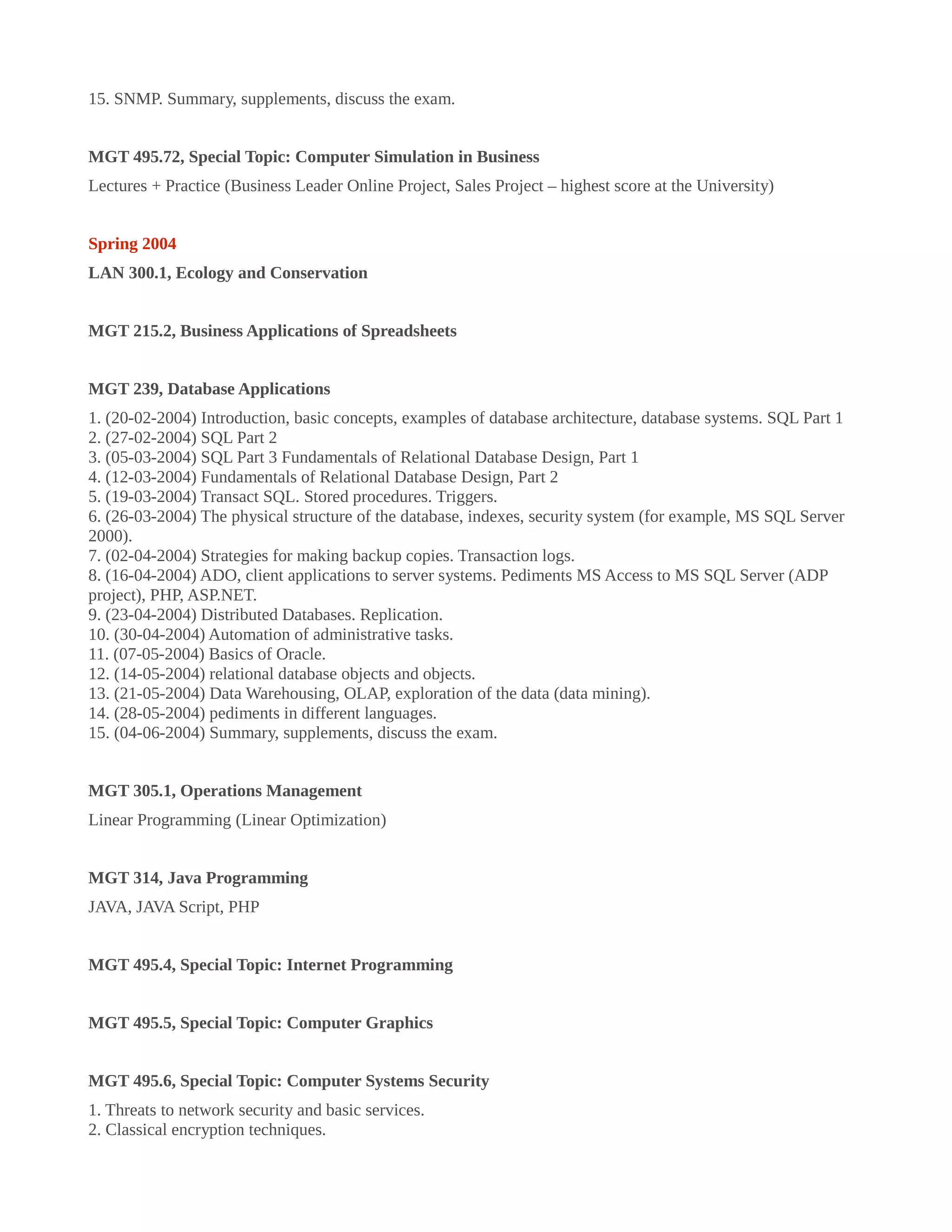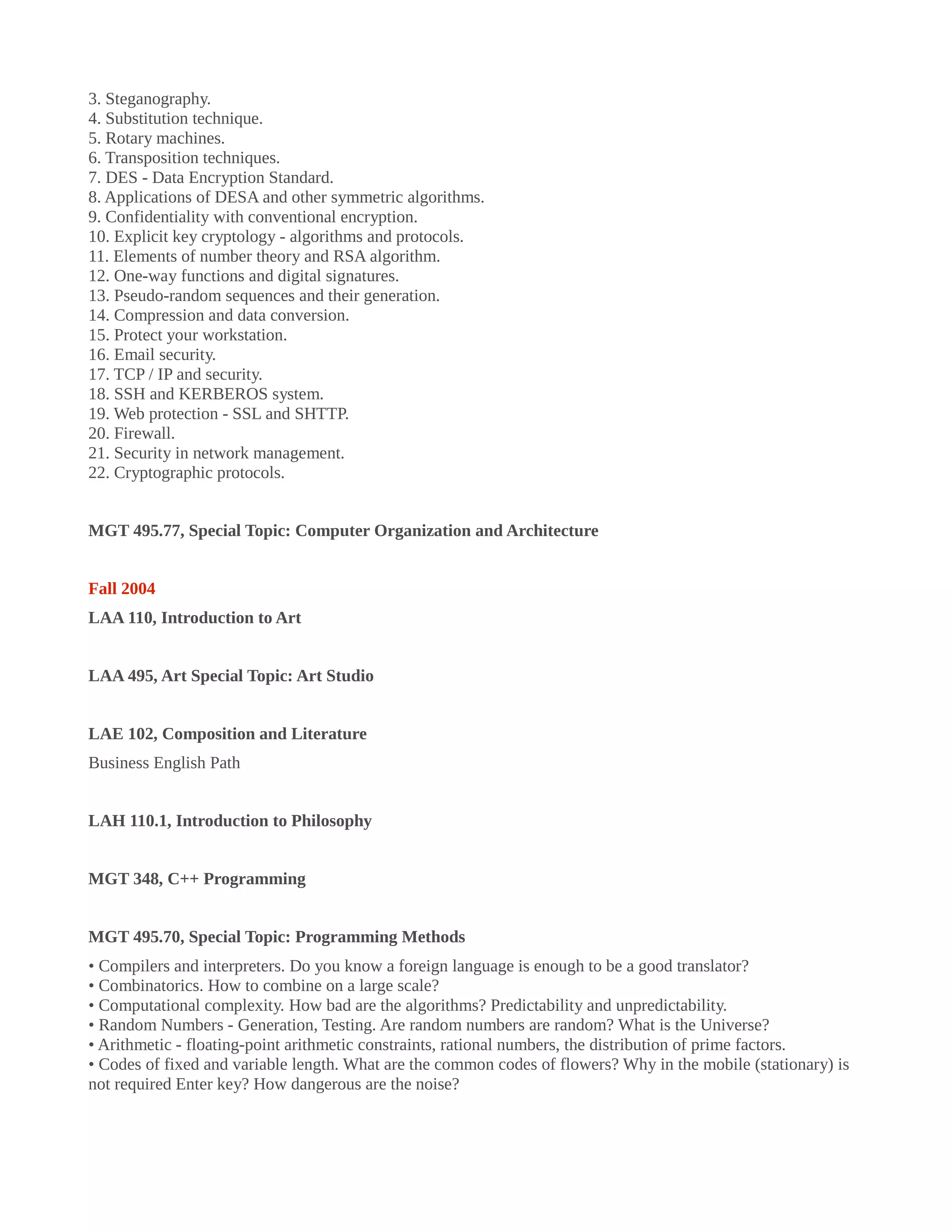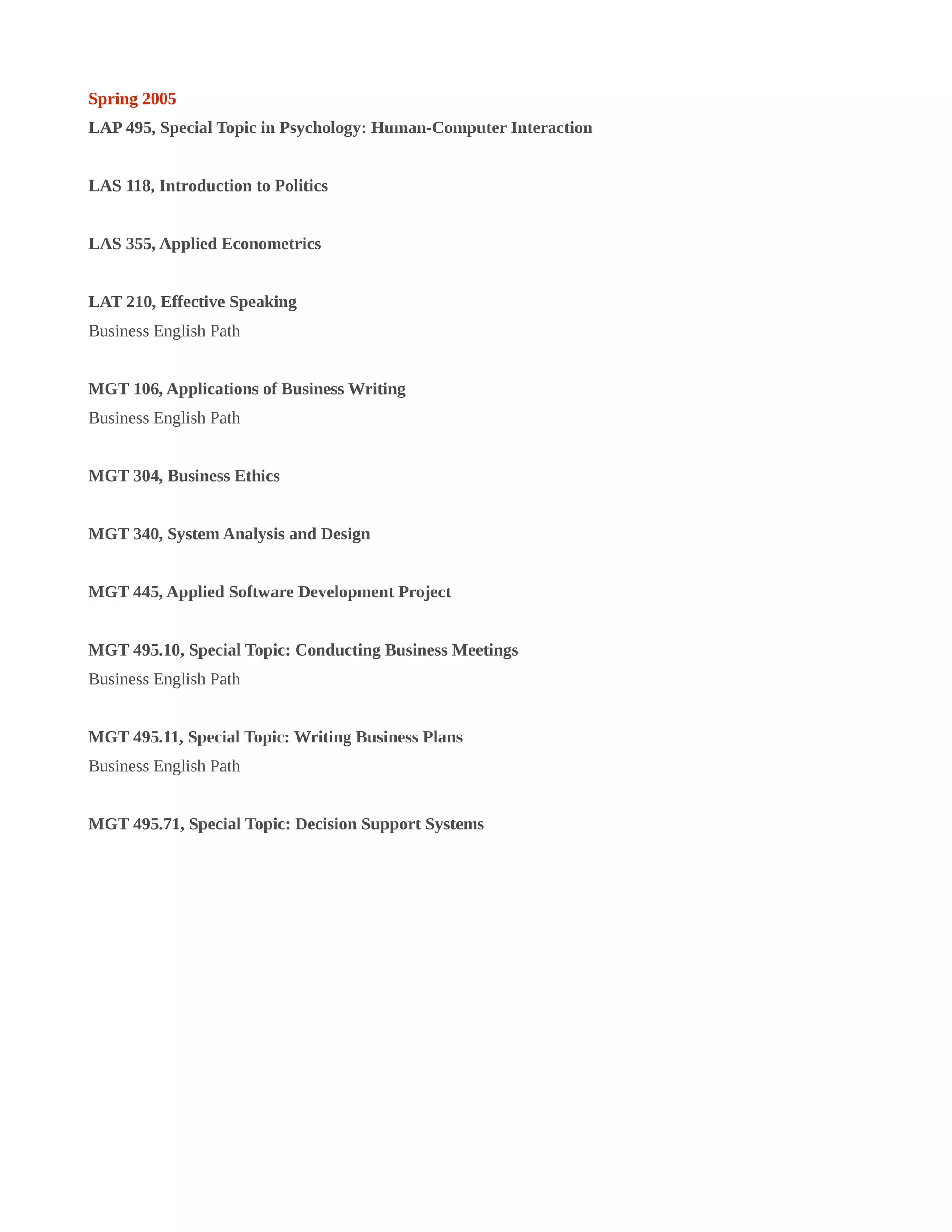This document summarizes Jacob Okoniewski's academic record, including the courses taken each semester during his studies at a university from Fall 2002 to Spring 2005. He earned a Bachelor of Arts degree in Computer Information Systems in December 2005. His coursework covered topics such as discrete mathematics, microeconomics, computer applications, algorithms, data structures, operating systems, statistics, calculus, psychology, computer networks, database applications, and business ethics.
